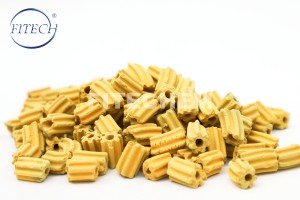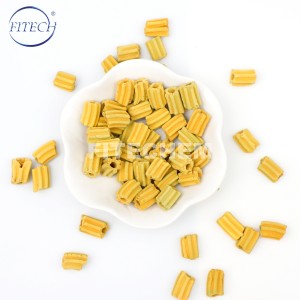In the 1820s, Guy-Gay-Lussac made deep improvements to the lead chamber sulfuric acid process, and added absorption towers, that is, Guy-Lussac towers, which can be said that the lead chamber method was in full bloom during this period. At about the same time, however, prototype and laboratory studies of the contact method for the preparation of modern sulfuric acid began.
In order to optimize this process, the core is to find a green, efficient way to oxidize sulfur dioxide. Of course, we quickly thought that we could solve this problem by improving the catalyst, and it happened that the basic concept of catalyst was put forward at that time, and the ammonia oxidation reaction we mentioned earlier was also discovered during this period. As a result, in 1831, some people tried to use platinum as a catalyst to oxidize sulfur dioxide. The test was successful, platinum can oxidize sulfur dioxide into sulfur trioxide, and then absorb water to get dilute sulfuric acid. The use of platinum as a catalyst is actually very similar to the technical transformation of many chemical processes we have today, transforming the homogeneous catalyst into a heterogeneous catalyst, so that the separation of the catalyst and the product, the loss of the catalyst and other problems can be avoided.
Of course, this reaction is still very troublesome to apply to engineering. The first is the absorption of sulfur trioxide. People with a little common sense know that sulfur trioxide cannot be absorbed by water, because the process of sulfur trioxide reacting with water to generate sulfuric acid will release a lot of heat, resulting in the evaporation of water to form acid fog, in fact, the absorption effect is very poor. Of course, it is not difficult to solve this problem, we can use concentrated sulfuric acid to absorb sulfur trioxide, get 98.6% concentrated sulfuric acid or fuming sulfuric acid and then add a small amount of water to get 98% sulfuric acid again, as a circulating liquid for absorption.
The revolutionary progress of contact sulfuric acid lies in the appearance of alum pentoxide catalyst, we know that the early 20th century is the development period of metal oxide catalysts, for contact scientists finally found a cheap vanadium pentoxide catalyst in 1914. Under the catalysis of vanadium pentoxide, the optimum temperature of SO2 is 400-500℃, the concentration of imported SO2 is about 7%, and the conversion rate can reach more than 97%. The biggest point of vanadium pentoxide catalyst is cheap leather, the cost is less than platinum as a precious metal do not know how much, and the anti-pollution ability of oxide catalyst is generally stronger than precious metals. In addition, due to the very high conversion rate of the synthesis reaction of SO3 and the absence of impurity gas, a very high purity concentrated sulfuric acid can be obtained eventually, so the lead chamber method is gradually replaced by the contact method in the subsequent time. After the 1950s, the lead chamber method and the later tower chamber method were basically replaced, and the contact method became the mainstream of modern sulfuric acid production.
If you want to find more sulfuric acid catalyst solutions, we will provide you with vanadium pentoxide catalyst products suitable for your production line. Look forward to working with you!
Post time: Jan-26-2024




